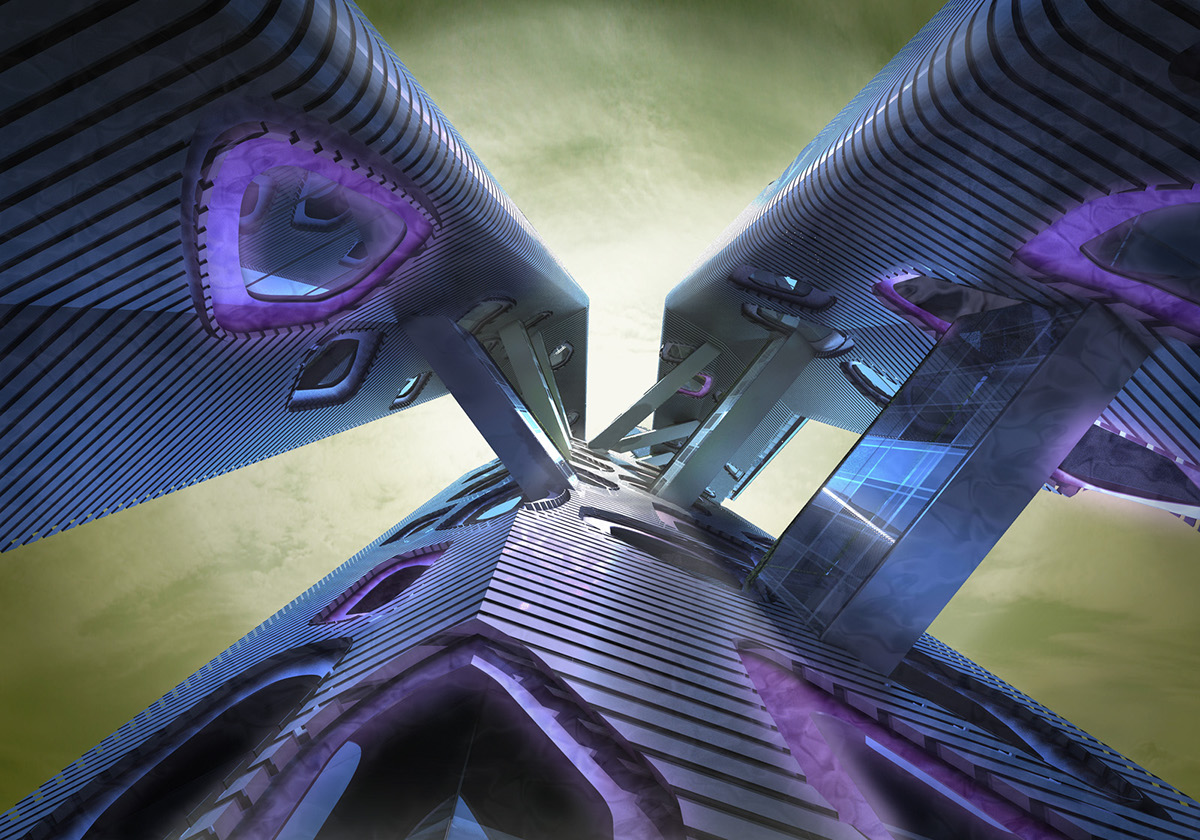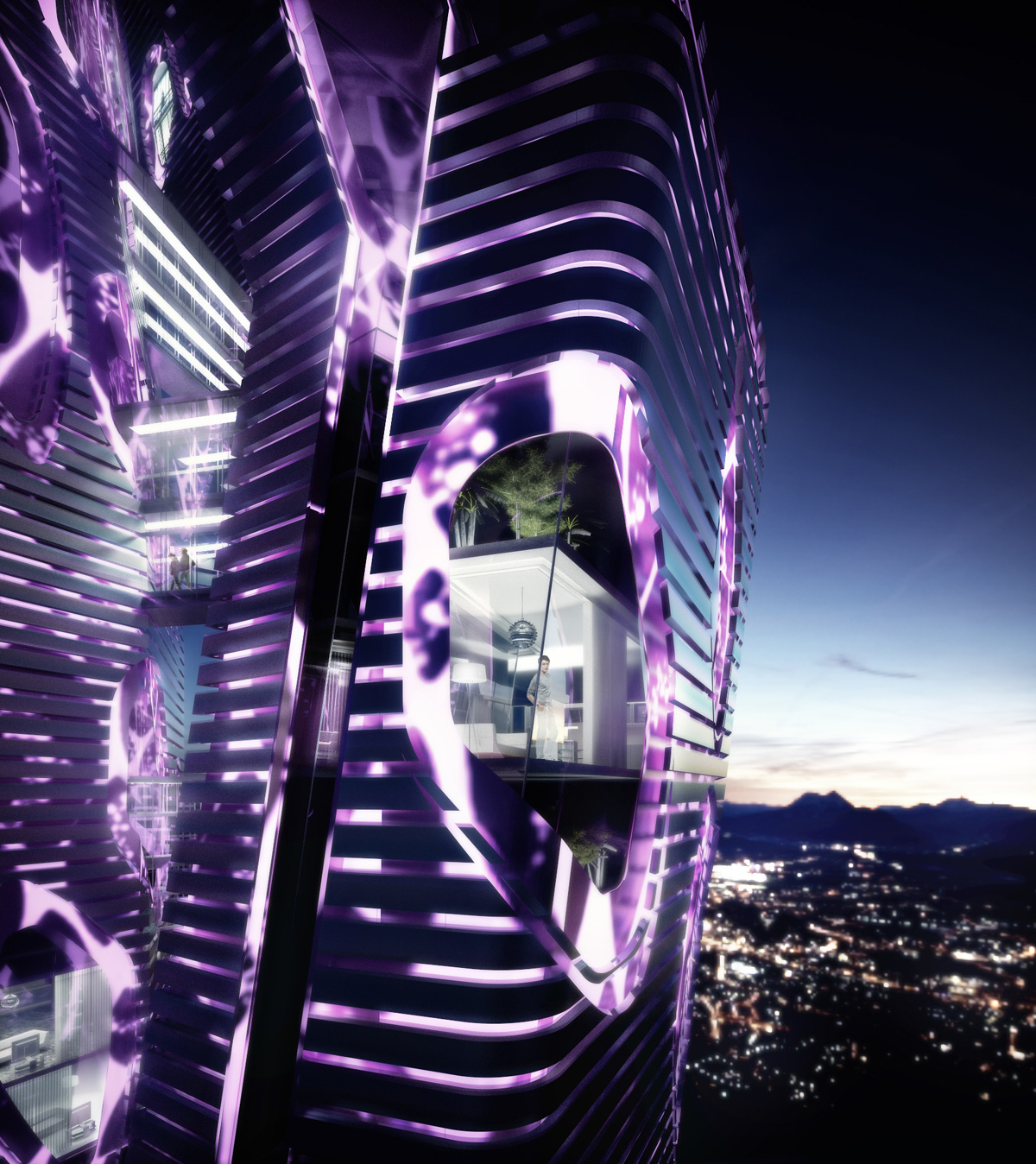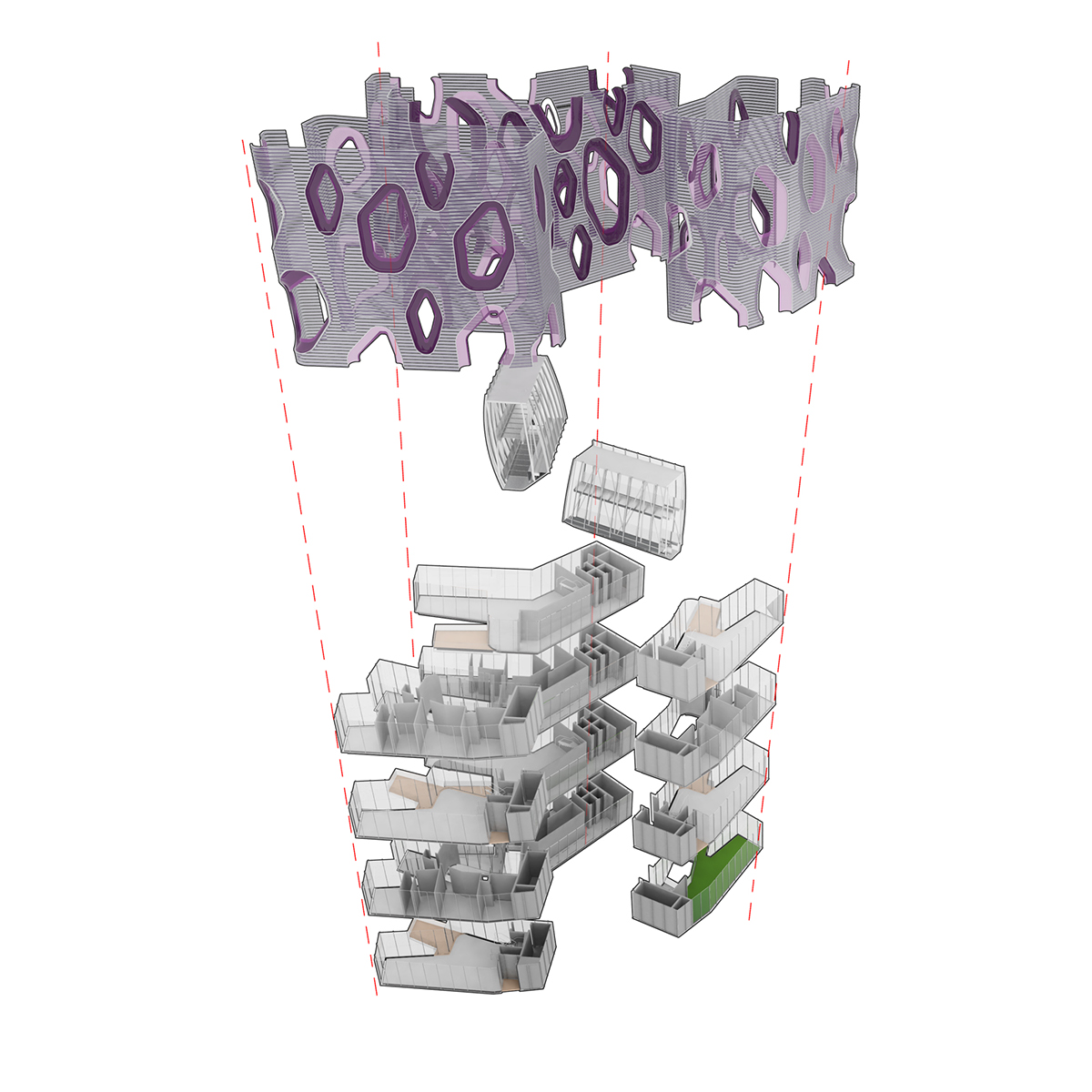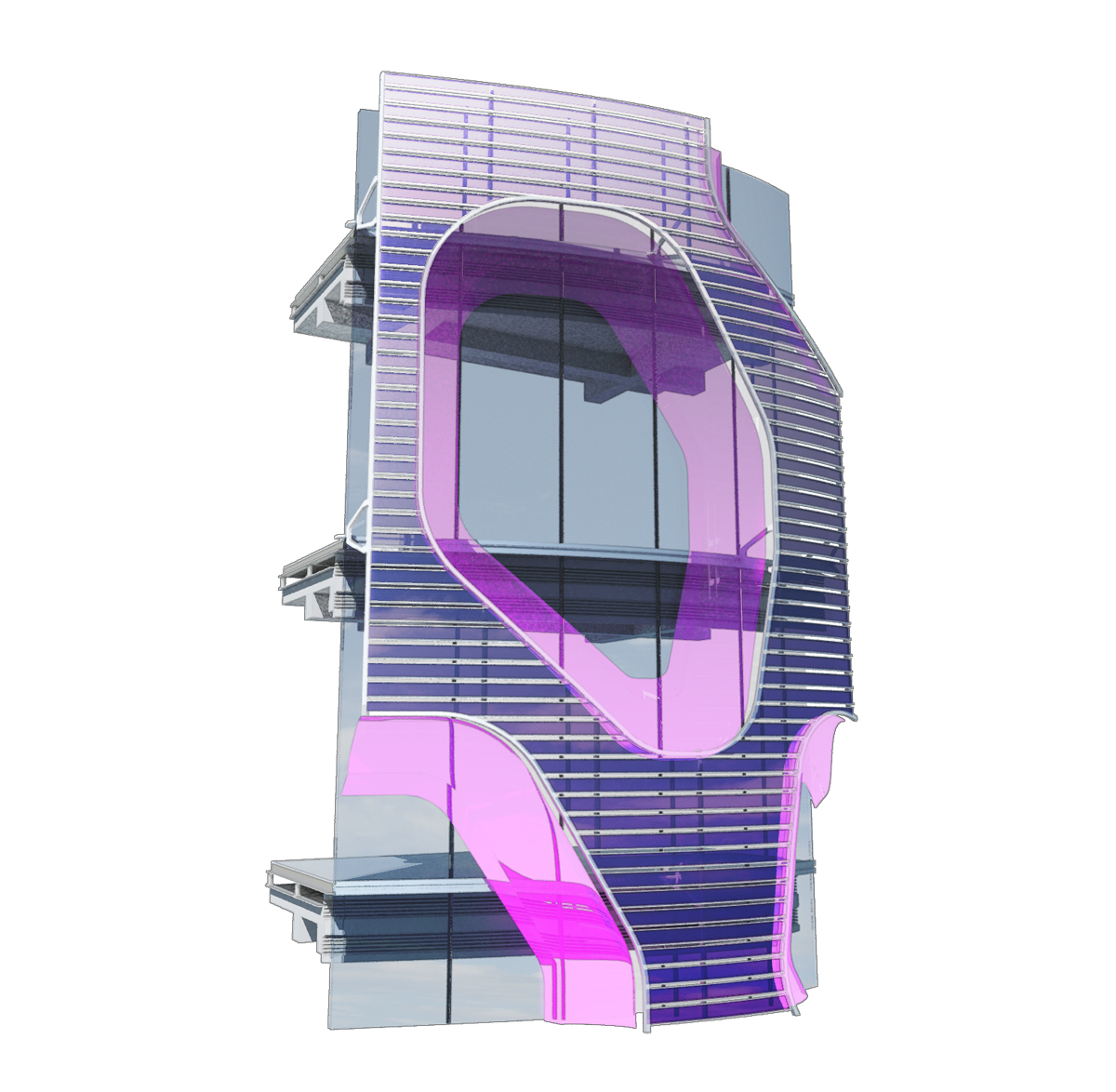Indigo Tower

With a focused look at sustainability, the Hong Kong-based architecture firm lO has been developing a series of research projects aimed at improving the quality of the built environment. One project, the Indigo Tower, takes an active stance and addresses the problem of urban pollution by helping purify the air of our cities through a combination of passive solar techniques and advanced nanotechnology.
The high-rise tower pulls dirt, grease and bacteria out of the air. The cleansing reaction is triggered by the use of a nano coating of titanium dioxide (TiO2) on the outer skin of the tower. TiO2 is a very strong oxidation agent triggered by a photocatalyst reaction.
During the day the reaction is naturally powered by sunlight acting on the titanium dioxide skin. At night the reaction is maintained by a series of ultraviolet lights that are powered by energy collected from photovoltaic panels during the day.
Glowing indigo object
The tower will be a glowing indigo object at night varying in intensity according to the amount of solar energy collected during the day. The indigo glow will become symbolic of the 24-hour cleansing; counteracting the haze that often dominates more and more cities around the world.


Thetoweris split into three bars to increase the amount of surface area, providesouthern light to the south face of each bar, and focus and increase windspeed. The added surface area allows for maximizing the amount of titaniumdioxide that can be placed on the building—enhancing the amount of air beingcleaned.
Thefocused and increased wind speeds maximize the amount of air pushed across thetitanium dioxide panels, provide cross
ventilationforevery unit in the towers, and power a series of vertical wind turbines.Positive pressure is created on the southern face of the towers and theresulting negative pressure on the northern façades creates optimal conditionsfor cross-ventilation. Careful attention has also been placed to prevent thebackflow air from one unit into another. The nano coating has the added benefitof neutralizing bacteriological contamination.
Theskin design is inspired by the pocketed and cellular texture of the TiO2molecule. A series of organic cells cover the building and are tapered tonaturally collect the water, a byproduct of the skin’s chemical reaction, andto collect and slowly release rainwater.
Theskinpulls off of the building on the south façades to provide natural shading andpushes into the inner skin of the north façade to maximize daylight.
Public gathering places
A series of gardens are located atregular intervals all the way up the tower. They become public gathering spacesas well as marsh lands to collect the water from the chemical reactions of theskin and to filter and process gray water from the towers. The plants also turnthe carbon dioxide, created in the chemical reaction of the skin, back intooxygen.
It isparamount to have the plants help maintain the base-level carbon neutrality. Alarge pool around the base of the tower is the final collection point of thefiltered water, which goes to support a large amount of animal and plant life.Water is also pumped back up the towers from the pool to service toilets.Furthermore, the pool at the base acts as a heat sink for the release of theheat generated from a back-up air-conditioning system. Here, the heat isreleased slowly, thus helps reduce the heat island effect
Thefocused and increased wind speeds maximize the amount of air pushed across thetitanium dioxide panels, provide cross
ventilationforevery unit in the towers, and power a series of vertical wind turbines.Positive pressure is created on the southern face of the towers and theresulting negative pressure on the northern façades creates optimal conditionsfor cross-ventilation. Careful attention has also been placed to prevent thebackflow air from one unit into another. The nano coating has the added benefitof neutralizing bacteriological contamination.
Theskin design is inspired by the pocketed and cellular texture of the TiO2molecule. A series of organic cells cover the building and are tapered tonaturally collect the water, a byproduct of the skin’s chemical reaction, andto collect and slowly release rainwater.
Theskinpulls off of the building on the south façades to provide natural shading andpushes into the inner skin of the north façade to maximize daylight.
Public gathering places
A series of gardens are located atregular intervals all the way up the tower. They become public gathering spacesas well as marsh lands to collect the water from the chemical reactions of theskin and to filter and process gray water from the towers. The plants also turnthe carbon dioxide, created in the chemical reaction of the skin, back intooxygen.
It isparamount to have the plants help maintain the base-level carbon neutrality. Alarge pool around the base of the tower is the final collection point of thefiltered water, which goes to support a large amount of animal and plant life.Water is also pumped back up the towers from the pool to service toilets.Furthermore, the pool at the base acts as a heat sink for the release of theheat generated from a back-up air-conditioning system. Here, the heat isreleased slowly, thus helps reduce the heat island effect




If all the buildings in a central businessdistrict followed the indigo technology, airborne pollution could bedrastically reduced by up to 80 percent. Mere neutrality is not enough—newbuildings must work together to enhance the quality of the physical environment.The lO team is currently working with manufacturers to construct a mockup ofthe skin for further testing.
The research projects are used as a meansto advance sustainable designs within the firm and theresults are often incorporated directly into current projects. Beyond theobvious environmental benefits, lO has realized the commercial value ofadvanced green technology. The sustainable technologies are catching onespecially well in large-scale residential projects because they bring a bettervalue to the individual units and gain tax credit from local governments.
The research projects are used as a meansto advance sustainable designs within the firm and theresults are often incorporated directly into current projects. Beyond theobvious environmental benefits, lO has realized the commercial value ofadvanced green technology. The sustainable technologies are catching onespecially well in large-scale residential projects because they bring a bettervalue to the individual units and gain tax credit from local governments.


